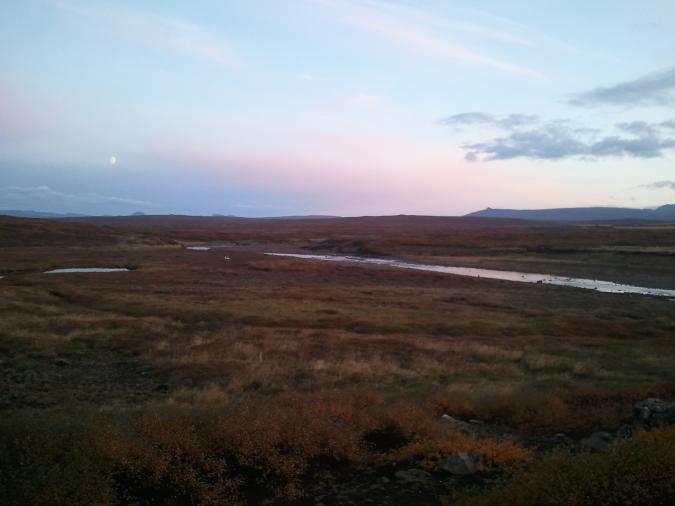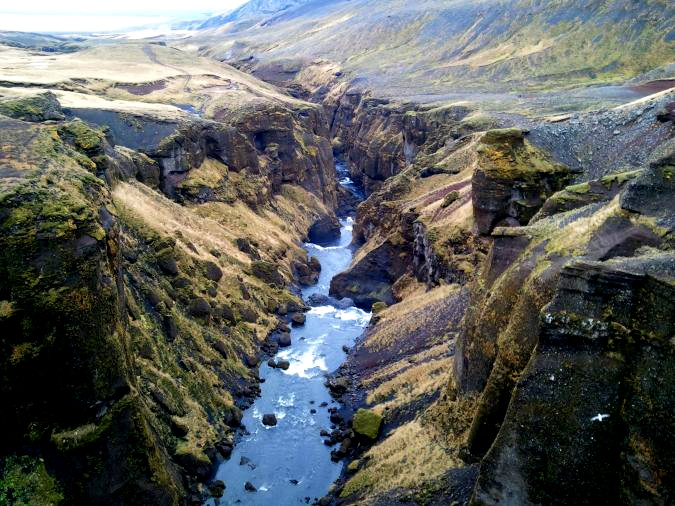
When we arrive, the owner of our Reykjavik guesthouse warns us that our proposed trail is, this far into the Iceland winter, likely impassable and certainly treacherous. We decide on a different route by pointing at random spots on a map of the country until we come to one he doesn’t think will kill us; our chosen destination is a peninsula called Snæfellsnes in the western part of the island. We will later discover a guidebook which describes it as “one of the most desolate and hostile environments in Iceland”, but on the map Snæfellsnes looks like it ought to be an picturesque region of craggy mountains, clear lakes, black sand beaches and lush fields.

No part of Iceland is lush. Only a short distance north of Reykjavik all the trees disappear; there is only rock and lichen. A wrong turn sends us on a two-hour detour to the northern shore of the country, where we are set back on our way by a fry cook at a windswept truck stop who, perhaps inevitably, speaks flawless English. By the time we arrive in Snæfellsnes itself it’s clear we won’t have time to make it to our original destination before sunset, and we point to a promising-looking trail closer to the foot of the peninsula. When we get there we find no trail at all: only a small cluster of farmhouses and a rocky plain that looks like it could support a handful of malnourished sheep. The farmhouse is empty so we set up camp in the middle of the pasture.
The American backpacker is used to certain nighttime comforts: the thrum of insects in nearby bushes, humanoid silhouettes of trees and a familiar blanket of stars. Here night is empty and silent—nothing moves, nothing grows higher than three inches and no light penetrates the clouds. You awake to a featureless black sky and the sound of your own ears’ ringing.
Morning is viciously cold. We set off deeper into Snæfellsnes, following another trail which exists only as a fiction on a map and pitching our tent in the middle of another field of rock and red lichen. At night wind, then rain, howl painfully through openings at the base of our tent; water pools under sleeping bags and around our numb feet. We push our bags together and wake up in a soggy, quivering heap.
We decide there will be no more camping. Back in Reykjavik we arrange to spend the night at a farmhouse at the foot of the infamous Eyafjallajokul; there we are greeted by a brusque farmer who ushers us into a paradise of clean sheets, hot water and milk from local cows. The next day we set out on a hike which our hostess had described as moderately difficult and unrewarding; the path leads us up a gentle slope and past, in rapid succession, the ten most magnificent waterfalls I have ever seen. Words and cell phone photographs are inadequate here. The stripping-away of all landmarks leaves a landscape composed entirely of geometry, motion and color.

Confusion sets in when we get to the next night’s farm: the proprietors are out, and we have no phone with which to call the number they have left us. Some hasty replanning, after a mercifully unsuccessful attempt to secure lodging at a nearby hostel lifted directly from a Stephen King novel (empty dining room set with a half-eaten plate of meat and fruit, lit candelabra arranged in front of alarming depictions of a witch and the Passion, man with a massive cross around his neck wandering the halls muttering) deposits us in a lakeside cabin more at home in an IKEA catalog than a horror story. We arise the next morning to a panoramic view of the water and forty-mile-an-hour winds.
The rest of the trip goes by in a haze: a rushed tour of Iceland’s more conventional tourist attractions, a short drive back to Reykjavik (including a brief passage through the charming town of Asholl), a last meal in our guesthouse, a frantic run from the car rental to the bus terminal. The tent is still dripping wet, I haven’t bathed in days, and I can barely keep my eyes open, but a few hours later I awake and find myself halfway to England.